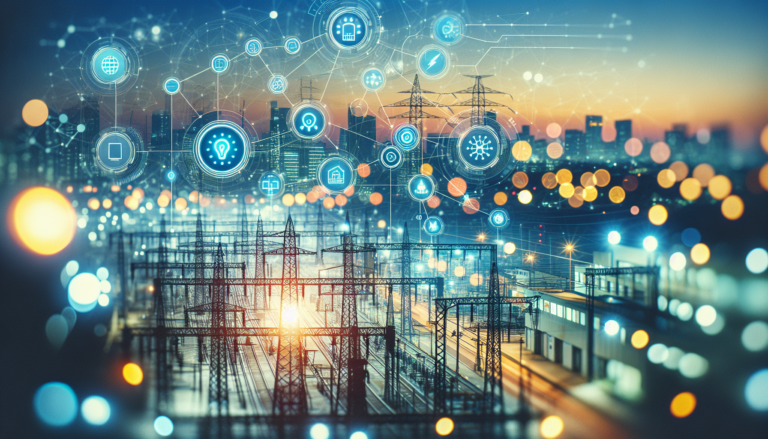Networks at the limit threaten expansion of data centers and electromobility
November 11, 2024
Modifying the current regulatory model, extending digitalization, investing in infrastructure and technology are some of the actions that should be implemented to meet demand.
The sector’s always forgotten players are now protagonists. With a regulatory framework from the 1980s, which many consider obsolete, the electrical distribution networks jumped onto the public agenda following the ravages caused by the August storms that exposed the fragility of the networks in the face of adverse weather conditions. Concern has been growing, especially because electricity demand will double with electromobility and the entry of new data centers.
Former ENEL CEO Fabrizio Barderi had already warned about this last year, when he said “that the solution lies in a structural reform of the way distribution is regulated.” Iván Quezada, CEO of CGE, also said, in an interview with Señal DF in September, that “there is a lot of talk about energy transition today and the truth is that few people ask themselves if the networks are prepared for that and the truth is that they are not.”
How can we face what is coming in terms of electromobility and data centers with a network that is considered obsolete? The roadmap for electromobility establishes that 100% of cars sold by 2035 must be electric. Added to this is the possible arrival of almost 30 new data centers. Just to give you an idea, a data center consumes between 20 and 40 MW, while a charging station for electric cars consumes between 10 and 12 MW.
According to the latest report from the CNE, the electricity consumption of the National Electric System would increase from 77.0 TWha to 134.5 TWh, which is equivalent to an increase of 74.50% in the period 2023-2043, with an average annual rate of 2.82%, where regulated customers show an average growth of 2.93% and free customers 2.75%.
According to the agency, with the entry of electric vehicles in the country, the projected increase in electricity demand, at the primary substation level, would rise from 23 GWh in 2023 to 10,264 in 2043.
Juan Meriches, executive director of the Association of Electric Companies warns that to deal with the current situation of the weakness of the networks “a reform to the distribution is necessary to allow for improved network planning and greater investment.” She adds that what we are seeing is a problem of network saturation, both in urban and rural sectors as a consequence of the model company scheme applied in Chile.
There is consensus in the industry that the new reality makes it urgent to change this concept, for a remuneration scheme based on incentives.
This is key if we consider that the growth of the demand for electric energy is linked to the growth of the GDP, whose estimate today is 2% to 2.5%. Sources consulted assure that this number can climb to 8% in peak times, so the growth should be adjusted to 4% or 6%. This reality implies doubling the network within ten or fifteen years.
To the weak infrastructure, Rosa Serrano, former director of studies and regulation of Electric Companies and a PhD candidate in Electrical and Electronic Engineering at the University of Manchester, adds the debt of quality of service with interruption levels of her minister around 14 hours. “To reduce them, we need to increase automation and control equipment to have a more efficient operation of the networks.” The country has set itself the goal of reaching 4 hours of interruption by 2035, which without the necessary investments will be difficult to achieve, he notes.
Sources consulted agree that the networks, without a change to the regulatory model, would not support the goals that the country has set, such as going from 24% to 75% of electrification of the final energy consumption matrix and installing 8,000 MW of distributed generation by 2050. In the last 4 years alone, companies have invested US$1.8 billion in the networks to provide them with slack and resilience.
What to do
Luis Gutiérrez, director of the Civil Engineering in Energy program at the Adolfo Ibáñez University and associate researcher for the Solar Energy Research Center, SERC, Chile, and for CENTRA, of the UAI, says that one way is to advance in intelligent ways of managing the network. “When the networks were built, which are already quite old, electromobility did not exist. And we cannot only depend on the classic approach, which has been to reinforce networks, to put in larger transformers, because it will not be enough.” Active network management implies demand management with flexible and differentiated rates.
Likewise, a modern network must consider the directionality of consumption in which users are consumers and producers of energy, and can inject it into the network. For this to happen, it is necessary to enable the network to expand Net Billing, which is currently incipient.
Another element of modernity has to do with smart metering, in which users can have better management of their demand, such as choosing to use energy at different times, with online tariffs and management of consumption.
A challenge that has the industry on alert, since without investment there is no transition, they said.
Courtesy of Diario Financiero

